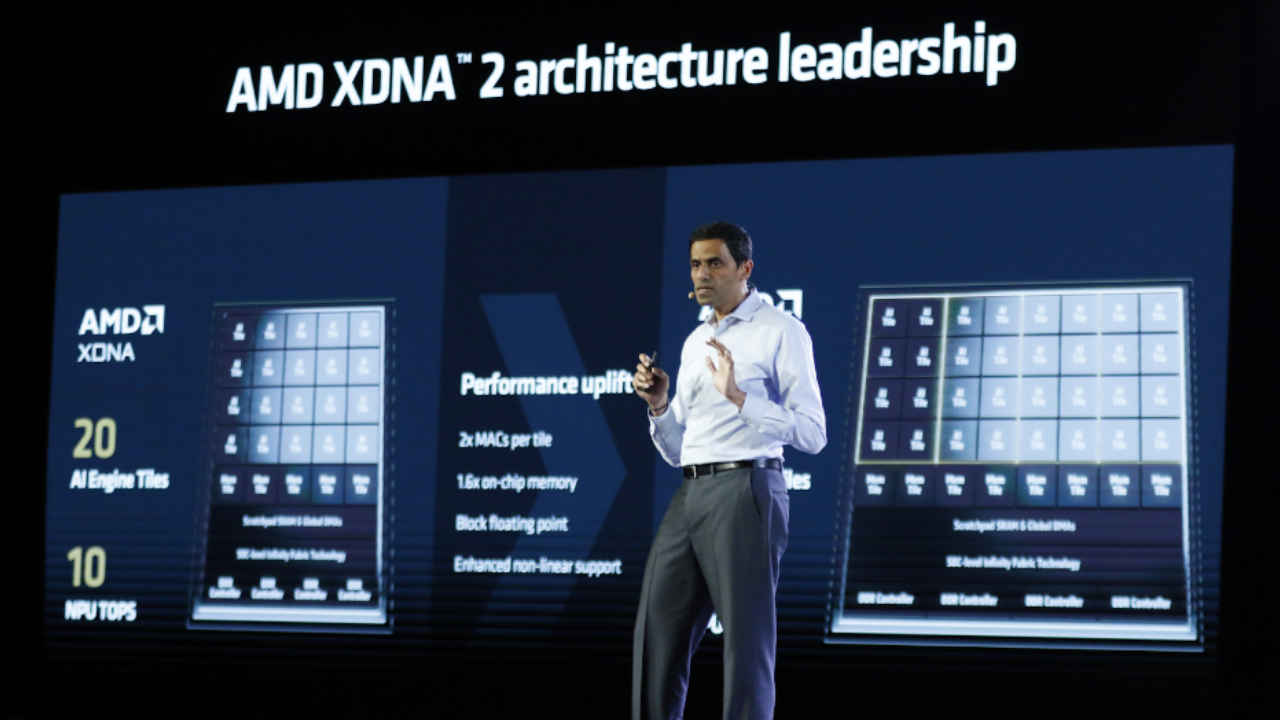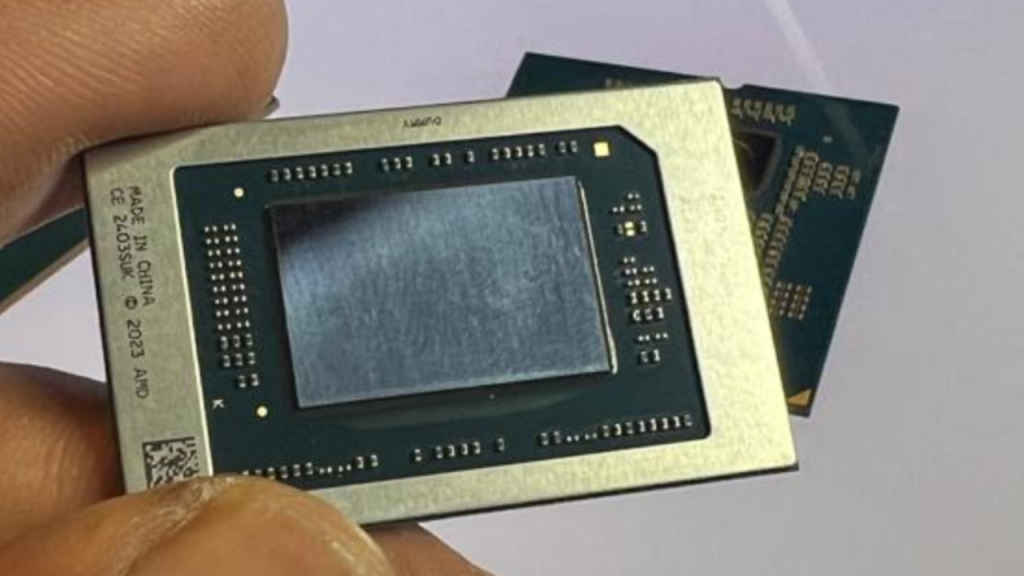

AMD took the wraps off its upcoming AMD Ryzen AI 300 series processors back in June at Computex 2024. We flew down to LA to attend AMD Tech Day 2024, which focused on a deeper dive into the new lineup of AMD’s Ryzen AI 300 series processors and beyond. With two days of intense tech and architecture sessions, detailing how AMD has reimagined the upcoming Ryzen AI 300 series of APUs (processors), there is a lot of new and cutting-edge tech in store with the forthcoming AMD Ryzen AI 300 series-powered laptops.
Also read: AMD Introduces Ryzen AI 300 and 9000 Series Processors at Computex 2024
While we will be detailing every aspect of the Zen 5 APU, this article focuses on what is likely to be the most important aspect of the Zen 5 chip, which is the AMD XDNA 2 NPU, the dedicated neural processing unit that manages all AI tasks. The AMD XDNA 2 NPU boasts up to 50 TOPS of AI performance from the NPU alone.


XDNA 2 architecture is based on spatial data flow architecture; it is a two-dimensional array of AI compute with a flexible interconnect that can be programmed dynamically at runtime and reconfigured to create custom compute memory hierarchies for AI processing. It is a cacheless architecture that promises excellent real-time processing efficiency. The AMD XDNA 2 architecture promises a 5x boost in NPU performance with 32 AI engine tiles (units). AMD is betting big on the XDNA 2 NPU, claiming up to a 5x compute performance boost and a 2x boost in power efficiency. According to AMD’s presentation deck, no other NPU hits 50 TOPs of performance (Note: All tests and comparisons are based on AMD’s internal testing methodology and process).
The Ryzen AI (XDNA 2) Engine is like a team of specialized workers that can adapt to different tasks. Each worker can adjust their tools (computation and memory resources) to get the job done efficiently, enabling the engine to handle more tasks without using too much energy.
For example, imagine working on a project that requires both writing and graphic design; the XDNA 2 Engine can assign one worker to focus on writing and another to focus on design, using the right tools for each task, making it faster and more efficient. Compared to the previous model (XDNA), the new XDNA 2 NPU can handle five times more tasks while using half the power, extending laptop battery life. Additionally, the engine can handle multiple tasks simultaneously, like eight different tasks at the same time.
AMD stressed the importance of having a powerful NPU that is ready for the AI age, focusing on how the NPU is far more efficient when it comes to performance per watt. This indicates how AMD’s XDNA 2 is all about high performance at the lowest possible power consumption. The XDNA2 NPU has also introduced “Block FP16,” which enables the processor to handle complex calculations faster and more accurately, without sacrificing precision. Normally, processors use either 16-bit floating point numbers (which are accurate but slow) or 8-bit integers (which are fast but less accurate). AMD claims Block FP16 combines the best of both, performing 8-bit integers with the accuracy of 16-bit floating point numbers.
Laptops on the AMD Ryzen AI 300 series processor will start hitting the shelves in the US market starting mid-July but there’s no word on their availability in India yet. However, we saw quite a few models from Asus, Acer, HP, and MSI being displayed at the demo zone. We can’t wait to get our hands on the machines for a more extended duration, for sure.
Our favorite pick of the lot has to be the HP OmniBook Ultra 14 and the Asus TUF A14. The HP Omnibook Ultra 14 is a typical thin and light laptop that is well-built and has a sharp 1440p display. The Asus TUF A14 is a thin and light gaming laptop with an NVIDIA Geforce RTX 4060 GPU paired with a 2.5K, 165Hz display. Both the laptops are powered by the AMD Ryzen AI 9 HX 370 processor, which is the highest in the line-up of AMD Ryzen AI 300 series processors.
You can expect 150 AMD Ryzen AI 300 series-based laptops to hit the market in 2024, how many of them will make it to India, is anybody’s guess. Given that we’ve seen a fairly low representation of AMD-based laptops in India in the recent past, we are hoping the trend will change this time around.
Also read: AMD launches 8700F and 8400F Zen 4 CPUs without RDNA 3 integrated graphics